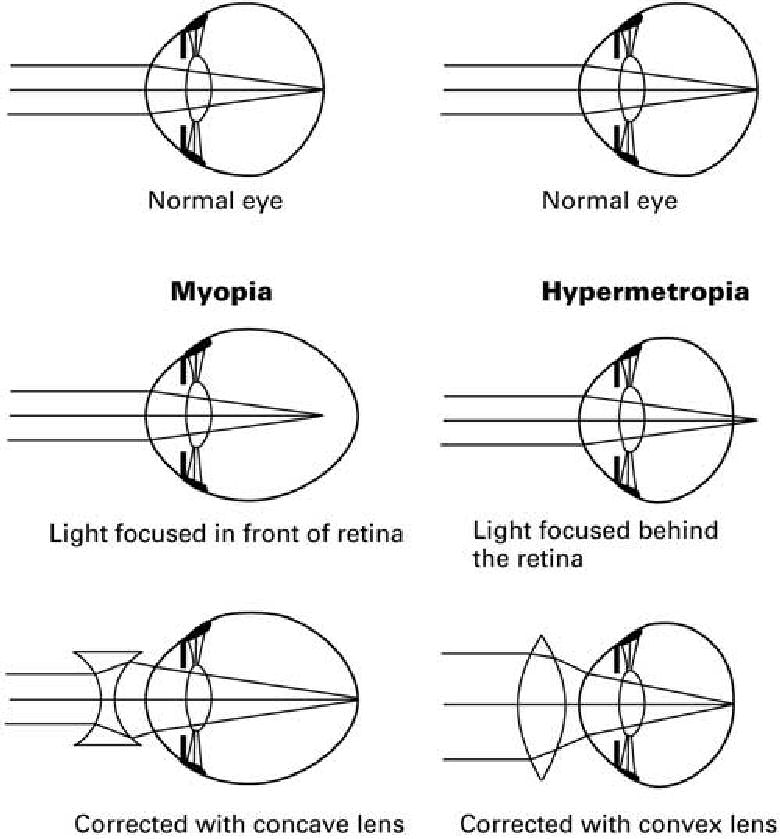227.HOW DO EYEGLASSES CORRECT VISION?
Just imagine what life was like for millions of people before eyeglasses were invented! If you were near-sighted and you looked up at night you couldn’t see the stars. You couldn’t see clouds or distant mountains, or birds flying through the air.
Today near-sighted people can see as much as people with normal eyes, because eyeglasses can correct their vision. To begin very simply, we can see because light enters our eye and falls on the retina in the eye, which is like the sensitized plate of a camera. Obviously, if the light falls in back of the retina or in front of it, we won’t be able to see. So the eye has a lens to focus the light and make it fall in the right place.
When normal eyes look at distant objects, the image falls on the retina without any problem. But when the same eye looks at a close object (say less than 5 meters away), the image falls behind the retina. So the lens of the eye “accommodates.” It means that a certain muscle contracts and changes the shape of the lens. This makes the image fall on the retina and the eye sees the object clearly.
Now two things can happen to make this accommodation impossible. First, as people get older the lenses in the eyes lose their elasticity. They can’t change shape to focus images correctly. The second thing is that some people are born with eyes that are too short or too long.
People with too short eyes are far-sighted. They can see distant objects well, but they must accommodate very strongly to see close objects. Sometimes it is impossible to do this enough to focus the image on the retina. So they wear glasses. The glasses do the job that their own eye lens cannot do. They focus the image on the retina and don’t have to accommodate at all.
A near-sighted person has eyes that are too long. The image is focused in front of the retina and looks blurred. But the near-sighted person can do nothing about it. If he accommodates (makes the muscle contract the eye), it will only make the image move farther forward. So he wears glasses that focus the image farther back and on the retina, and then he can see clearly.



Leave a Reply